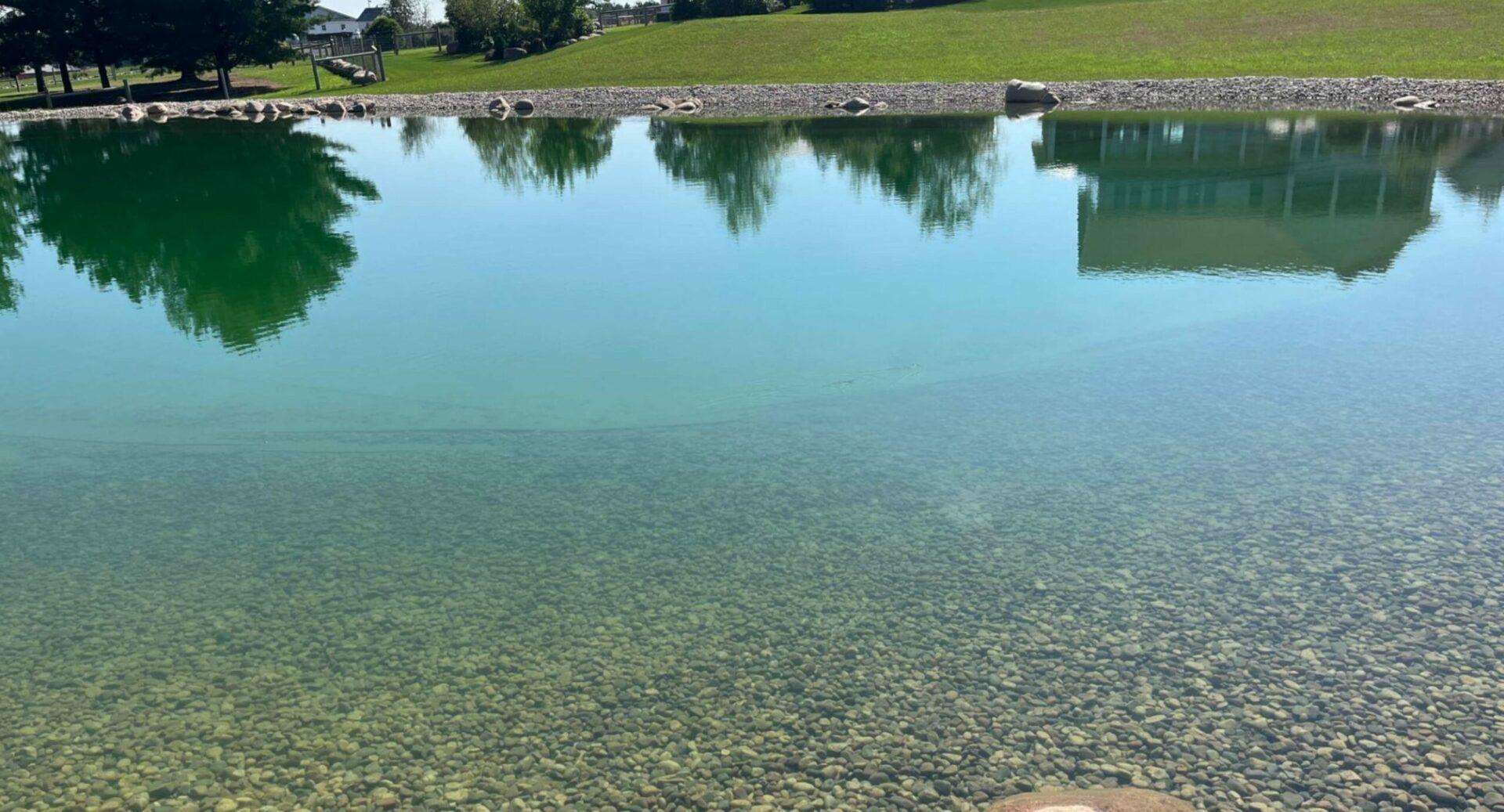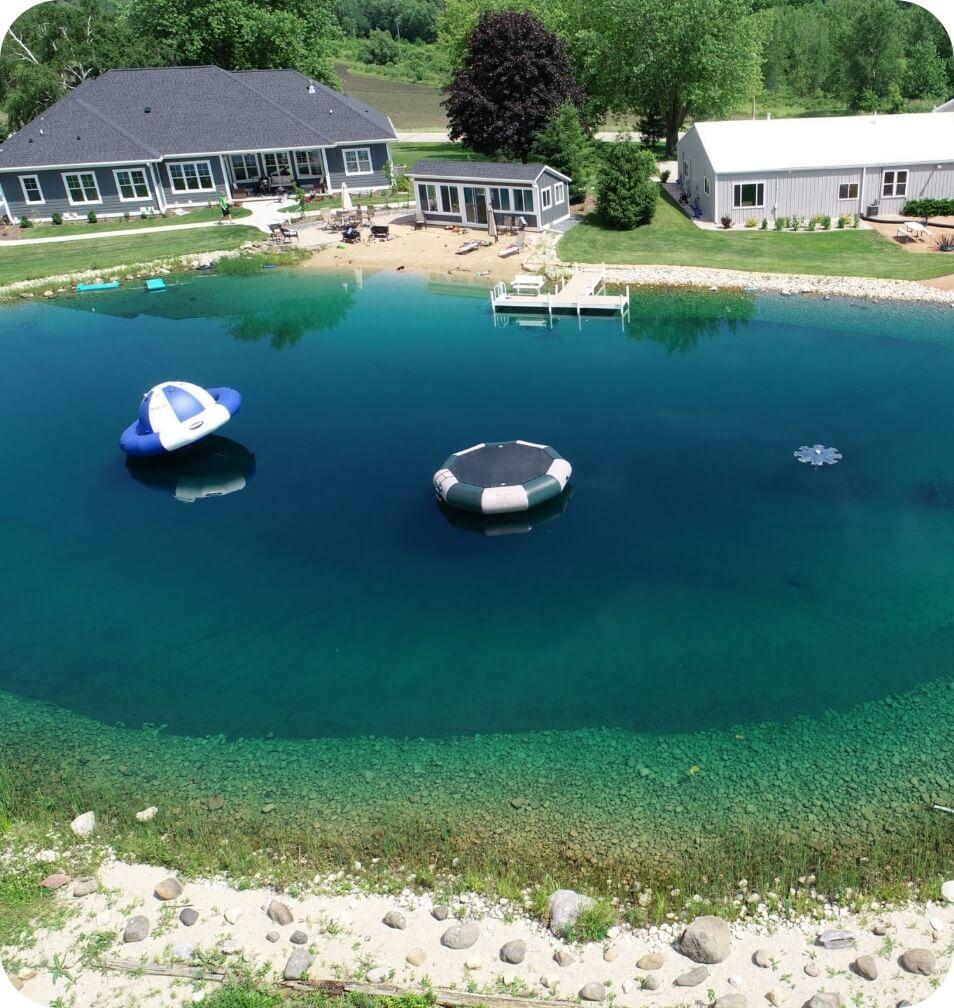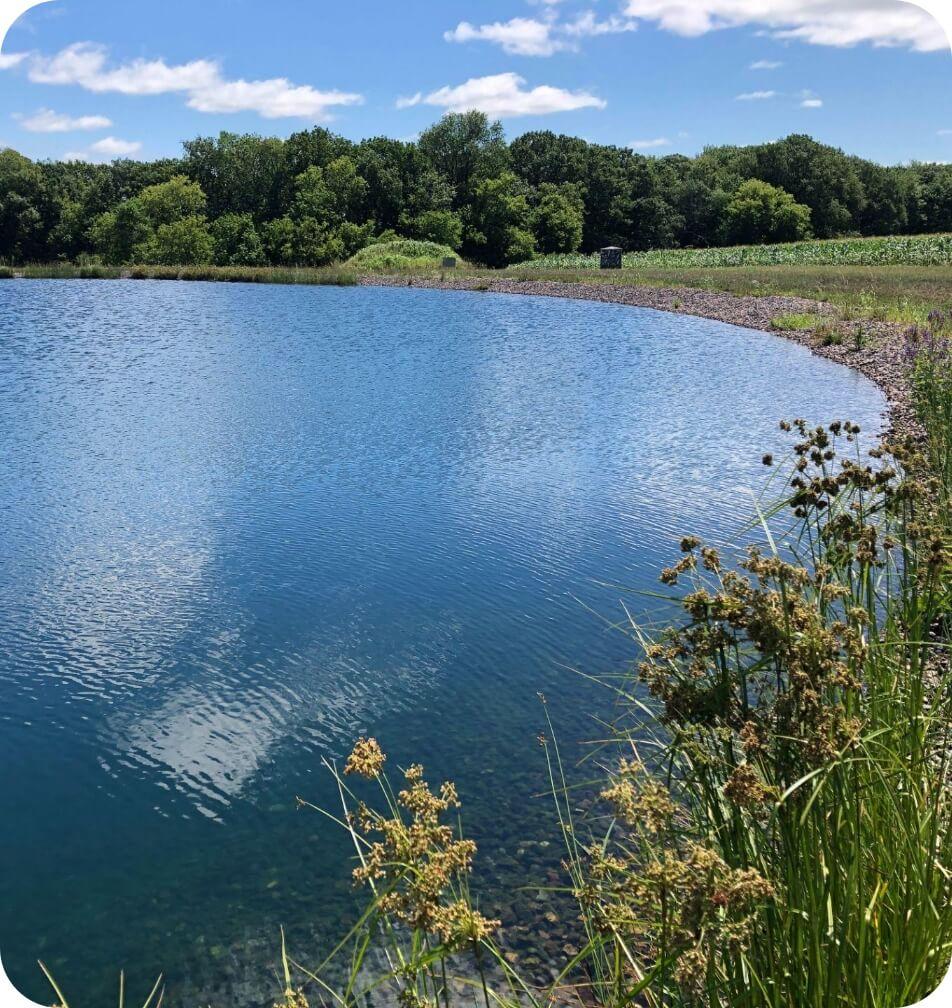Professional aquatic consulting provided by Wisconsin Lake & Pond Resource, LLC



Many of our clients have commented that pond consultations are the most valuable service we offer! Our biologists will meet with you on site to discuss your pond concerns, collect physical, chemical, and biological data on your pond, and recommend management strategies. A professional pond consultation is the best place to start on the road to a healthy pond!
We will cover a wide range of management areas relating to your aquatic resource. Areas include:
Water Quality Monitoring
- Oxygen Levels
- Nutrient Loading
- Turbidity
- Nuisance Aquatic Growth
Aquatic Plant Identification
- Native and exotic plant species
- Density and abundance ratings
Water Testing & Analysis
- Understanding water quality parameters
- Nuisance algae management
- Incorporating “beneficial” biological mirco-organisms and enzymes
- Monitoring programs
- Fishery management and assessments
- Erosion control and structure failures
Sediment Analysis
- Total Solids
- Percent organics
- Depth of soft sediment
- Nutrient content
- Heavy metal and toxicity levels
Algae Analysis
- Species ID
- Algal Challenge
- Toxicity Testing
Management Programs
- Aquatic plant management and control
- Nutrient reduction techniques
Understanding Water Quality Parameters
The following list of definitions is intended to give you a basic understanding of the results derived from analysis of water samples collected from your lake or pond. For a more detailed discussion of your results and their management implications, please contact your biologist at Wisconsin Lake & Pond Resource by calling us at 866-208-0724 or filling out our contact form.
Alkalinity
Alkalinity is a measure of the amount of carbonates, bicarbonates and hydroxide present in water. Alkalinity is determined by soil and bedrock characteristics. Lakes and ponds fed by groundwater from limestone aquifers tend to have high alkalinity. High alkalinity is often associated with high algae and aquatic plant production. Low alkalinity (< 25 mg/l) waters are susceptible to acid rain.
Ammonia
Ammonia is a nitrogen compound that is produced by microbial decomposition of organic matter. Ammonia is rapidly converted to nitrate in the presence of dissolved oxygen. Sudden increases in ammonia may indicate pollution from fertilizers, manure or septic systems. Concentrations above 0.03 mg/l may be toxic to fish and other aquatic organisms.
Carbon Dioxide
Carbon dioxide is present in water as a dissolved gas. It is essential to the survival and growth of aquatic plants and algae. Carbon dioxide concentrations increase as dissolved oxygen decreases. High carbon dioxide concentrations may inhibit the ability of fish to utilize available oxygen. Concentrations in surface water are usually less than 10 mg/l, although groundwater concentrations may be much higher.
Chloride
Chloride occurs naturally in lakes and ponds, and may fluctuate seasonally with runoff patterns. High levels of chloride (> 10 mg/l) however, may indicate contamination from septic systems, fertilizers, animal wastes or road salts. At normal levels chloride is not toxic to aquatic life, but it may become toxic at higher concentrations.
Dissolved Oxygen
Dissolved oxygen is one of the most important parameters in aquatic ecosystems, as most aquatic organisms depend on dissolved oxygen for survival. Oxygen is produced by aquatic plants in the process of photosynthesis. Supersaturation (>100%) may even occur during algae blooms. However plants, and microbes that digest dead plant matter, also consume oxygen. Thus, increased plant production increases the likelihood of oxygen depletion (anoxia). The most important source of oxygen in aquatic environments is atmospheric diffusion, but because oxygen diffuses into water rather slowly, mixing through wave action or current is essential for oxygenation of water. This is why small ponds with limited wind fetch are most susceptible to anoxia.
High plant or algae production, or heavy nutrient loading can lead to oxygen depletion or anoxia. Most common fish species require at least 4 mg/l dissolved oxygen for survival. Few species can survive less that 2 mg/l. When anoxia (<1 mg/l) occurs at the sediment layer, phosphorus is released from sediments – fueling algae blooms. Toxic gases such as ammonia, methane and hydrogen sulfide are also released from bottom sediments under anoxic conditions.
Hardness
Hardness relates to the presence of Magnesium (Mg++) and Calcium (Ca++) ions in water. Waters with total hardness from 0-60 mg/l are termed soft, from 60-120 mg/l medium hard, from 120-180 mg/l hard, and > 180 mg/l very hard. Marl (calcium carbonate) will precipitate out of water in very hard lakes. Hard water lakes tend to produce more fish than soft water lakes.
Nitrate
Nitrate is a nitrogen compound that is important for plant growth. Nitrate plus ammonia concentrations exceeding 0.3 mg/l may lead to nuisance algae blooms. Nitrate concentrations exceeding 10 mg/l pose a health risk to infants and expectant mothers. High nitrate levels may indicate pollution from fertilizers, animal wastes or septic effluent.
Phosphorus (phosphate)
Phosphorus (phosphate) is an important growth nutrient for plants. Phosphorus concentrations are commonly the limiting factor in plant production in aquatic environments. Thus even small additions of phosphorus to a lake or pond may cause dramatic increases in plant and algae growth. Orthophosphate concentration is a measure of soluble phosphorus that is readily available to plants. Concentrations above 30 ug/l (0.03 mg/l) may lead to nuisance algae blooms. Concentrations above 100 ug/l suggest nutrient pollution.
pH
pH is the negative logarithm of the hydrogen ion concentration. pH serves as a ready indicator of the acidity or basicity of water. A pH of 7 is neutral. Less than 7 is considered acidic. Greater than seven is considered basic or alkaline. Preferred pH ranges for most fish is 6-8. Few fish survive below 5. High plant production may elevate pH above 8.
Silica
Silica, or silicon dioxide, is found in all natural waters. Silica is a major nutrient for diatomaceous algae. High diatom populations are often associated with high silica concentrations. Normal values may range from 0 – 75 mg/l.
Sulfide
Sulfide occurs in groundwater and sometimes in lakes or ponds. Hydrogen sulfide may occur naturally as a result of microbial decomposition under anoxic conditions. Hydrogen sulfide produces a “rotten egg” smell. Its presence in a lake or pond is highly toxic to fish. Sulfide concentrations may also indicate pollution from sewage or industrial wastes, particularly from paper manufacture.
- Quality Water for Quality Wildlife ViewingBy Zachary D. Hass Senior Aquatic Biologist, Director of Operations Every year property owners, nature viewers, conservationists, and hunters are looking at how they can improve properties for wildlife. One of the most overlooked items… Read more: Quality Water for Quality Wildlife Viewing
- A Pond & The “L” WordLEAK!! By Wisconsin Lake & Pond Resource Staff If we ever get a call that a property owner’s pond is leaking, there is typically a root reason or event that is occurring other than an… Read more: A Pond & The “L” Word
- Picking the Right Excavator for your ProjectBy Wisconsin Lake & Pond Resource Staff When a pond project is in the planning process, one of the most important decisions is selecting the right excavator for the specific type of project. If the… Read more: Picking the Right Excavator for your Project

Very professional and friendly
Private pond owner


